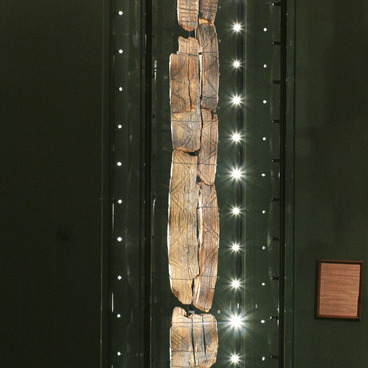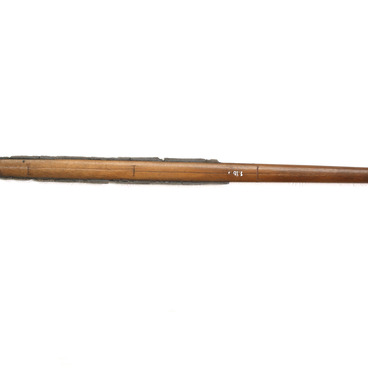This female festive dress was worn in northern provinces of the Russian Empire in the XIX century. It consists of cambric homespun shirt, bias-cut pinafore, woolen belt and a sleeveless vest. The headdress was a silk scarf and velvet headband. The headband fully covered hair that was plaited in two braids and arranged on the head in the shape of a bun or a crown.
1 / 2
#4
Russian female festive dress
#5
#6
The pinafore
#3
The pinafore consisted of side gores, two front sheets and one back sheet and had fastening or a seam in front. Such bias-cut pinafores were sewn from woolen, silk or canvas of red or blue color and decorated with golden or silver yarn and. It was the traditional clothing of Russian women in Arkhangelsk, Novgorod, Pskov and Smolensk provinces. In late XIX – early XX centuries rural and city women wore bias-cut pinafores on holidays and for church service.
#7
Shirt
#8
A white ‘insert’ tunic-style shirt was most often worn under the pinafore. The front and back of such shirt were joined in the shoulder area using inserts, hence the name. The shirt consisted of two parts: the top and bot tom. Sleeves and the top part were made of cambric and decorated with embroidery and lace, and the bottom was made from a coarser fabric. Wide sleeves narrowed towards the bottom, the collar fit tightly to the neck.
#9
Belt
#10
Pinafores were worn with red belts with painted design on both sides. Festive belts were made of embroidery wool – thin commercial wool of high quality. They were thick and sturdy, more than four centimeters wide. The ornament could have any color and motif: floral, plant, geometric.
#11
Sleeveless vests
#12
A short sleeves vest was worn over the pinafore. It is made of red velvet. The vest is hand-embroidered with golden thread – cannetille. This is a thin golden wire woven tightly into a spiral. This type of embroidery sometimes took more than a year to make. Sleeveless vests were worn by city women, rarely by peasants.
#13
Headdress
#14
On their heads women wore a scarf and a headband (‘kokoshnik’) decorated by golden embroidery, braiding, foil and glass beads. The name ‘kokoshnik’ originates from the old Slavic word ‘kokosh’ – a rooster. The design of this headdress resembled a rooster’s comb. In the first half of the XIX century it was worn on special occasions by merchants’ wives, peasants and city women. The scarf worn together with the headband covered the shoulders and back. In the early XX century, the headband grew out of everyday use and was preserved only as a wedding headdress.
#15
Footwear
#16
The last element of a festive costume were brightly colored leather booties.
#17
O.E. Kler Sverdlovsk Regional Ethnographic Museum
читать дальшескрыть
00:00
00:00
1x
Russian female festive dress
Время создания
Late XIX century
1
Открыть в приложении
Поделиться



